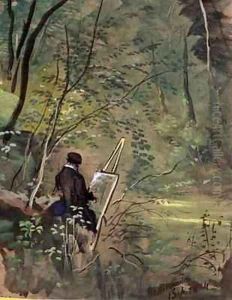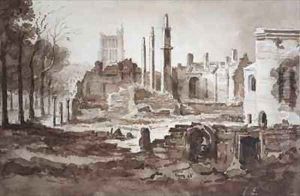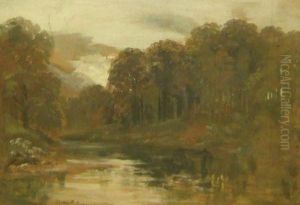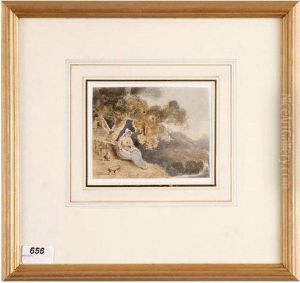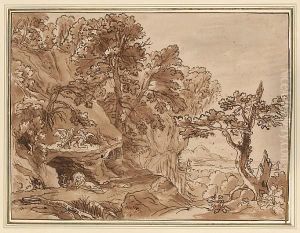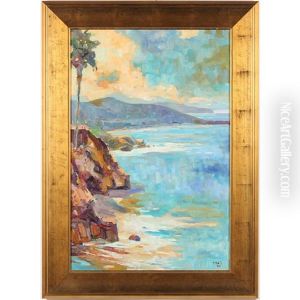The Rev. John Eagles Paintings
The Rev. John Eagles, born in 1783, was a multifaceted individual known for his contributions as an artist, writer, and clergyman. His life and career spanned a period of significant change in British society, during the late Georgian and into the Victorian era. Eagles was not only a man of the cloth but also deeply involved in the cultural and artistic movements of his time, which is somewhat reflective of the broader intellectual curiosity that characterized the period.
Eagles was educated at Oxford University, where he developed a passion for both the arts and theology. After completing his studies, he took holy orders and became a clergyman in the Church of England. His career in the church provided a stable platform for his varied interests, including his pursuits in the world of art and literature. As a writer, Eagles contributed essays and articles to various journals and periodicals, often under pseudonyms. His writings covered a wide range of topics, from art criticism to social commentary, reflecting his broad intellectual pursuits and engagement with contemporary issues.
In addition to his literary endeavors, Eagles was also an accomplished artist, particularly in the field of landscape painting. His artistic style was influenced by the Romantic movement, which was prevalent during his lifetime. The Romantic movement, with its emphasis on emotion and the sublime beauty of nature, resonated with Eagles' own sensibilities and theological reflections on the natural world. His paintings often depicted the rugged landscapes of the British countryside, imbued with a sense of the divine and the majestic.
Despite his talents and contributions, Eagles never sought widespread recognition for his art, instead preferring the life of a country parson and scholar. His works were, for the most part, shared within a circle of friends and acquaintances rather than exhibited publicly. This modest approach to his artistic career has led to him being somewhat overlooked in the annals of British art history, though in recent years there has been a renewed interest in his work and writings.
Eagles' legacy as a clergyman, writer, and artist is a testament to the rich intellectual and cultural life of his era. His ability to navigate multiple spheres – religious, artistic, and literary – offers a fascinating glimpse into the interconnected world of 19th-century British intellectual and cultural history. Eagles passed away in 1855, leaving behind a body of work that, while perhaps not widely known, is deeply appreciated by those who discover it for its insight, beauty, and depth.
